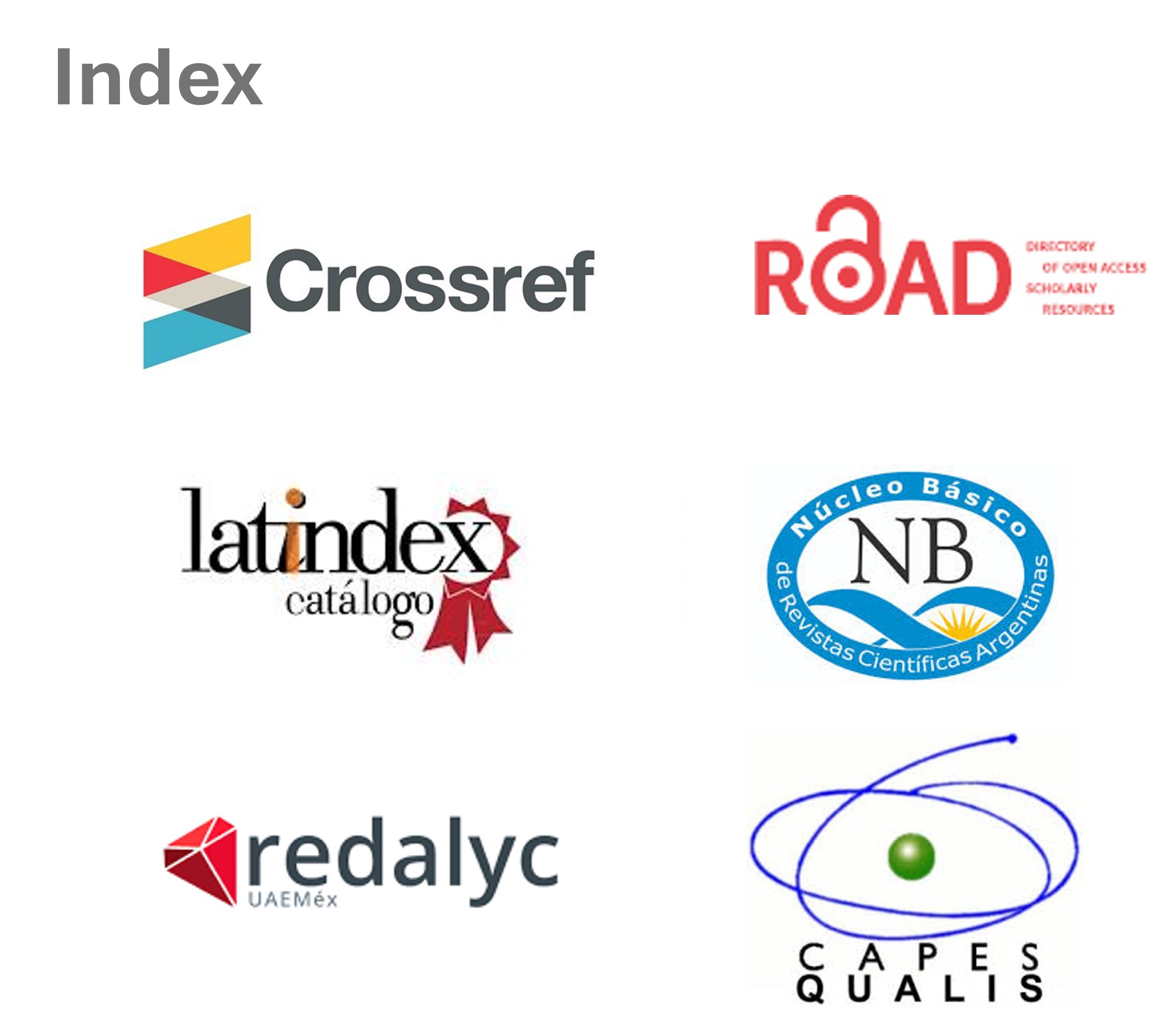Dynamics of innovation in vegetal biotechnology. The cases of two firms in Argentina and France
DOI:
https://doi.org/10.48160/18517072re32.292Keywords:
plant biotechnology, gmo, scientific labor divisionAbstract
Plant biotechnology is a fertile field for social studies of science regarding the controversies of genetically modified organisms. But it is also a privileged context for the study of international division of scientific labor in the industrial sector, for inquiring the sort of research developed by firms of plant biotechnology.
Despite vegetal biotechnology field is dominated by a few firms, there are others that also try to produce their own genetically modified seeds.
Dynamics of research and innovation within firms devoted to development of transgenic crops are scarcely studied. In private sector, devoted to the search for profit, parameters that define these dynamics are different from academy: firms must take into account strategies, research funding, market conditions and public opinion (especially important in the domain of biotechnology).
The purpose of this article is to characterise the modes of innovation in agri-biotechnology firms which are not the dominant ones, by analysing enterprises in Argentina and France. These two firms show that innovation in this field it’s a dynamic factor, variable according the context in which they develop. Basic research is assured by public sector alone or by participation of private enterprise. On the other hand, international division of labor in the field of innovation does not respond to a simple model of North-South. On the contrary, it relies on particular conditions of each country and of global interests of the firms.
References
ANR (2008), Programme national de recherches sur les organismes génétiquement modifiés, Second séminaire général de restitution du Programme anr-ogm, Programme du séminaire, 27 y 28 de noviembre 2008, Museo Nacional de Historia natural, París.
Bisang, R. (2007), “El desarrollo agropecuario en las últimas décadas: ¿Volver a creer?”, en Kosacoff, B. (ed.), Crisis, recuperación y nuevos dilemas. La economía argentina 2002- 2007, Santiago de Chile, Cepal, pp. 187-260.
Bisang, R. y L. Varela, (2006), “Panorama internacional de la biotecnología en el sector agrario. Dinámica de las mega empresas internacionales de agro-biotecnología e impacto sobre la oferta local”, en Bisang, R. et al. (comps.), Biotecnología y desarrollo. Un modelo para armar en la Argentina, Buenos Aires, Prometeo Libros, pp. 25-62.
Bonacelli, M. B. y S. Salles-Filho (1998), “The New Biotechnology Companies and the Competitive Conditions of Markets: Some Examples from France and Brazil”, Science, Technology & Society, 3, (1), pp. 207-224.
Bonneuil, C. y F. Thomas (2008), “L’INRA dans les transformations des régimes de production des savoirs en génétique végétale”, en Bonneuil, C., G. Denis y J. L. Mayaud (comp.), Sciences, chercheurs et agriculture, París, Éditions Quæ & L’Harmattan, pp. 113-135.
Coriat, B., F. Orsi y O. Weinstein (2003), “Does Biotech Reflect a New Science-based
Innovation Regime?”, Industry and Innovation, 10, (3), pp. 231-253.
Facheurs volontaires (2003), “Facheurs volontaires”, .
Feldman, M. (2003), “The locational dynamics of the US biotech industry: knowledge externalities and the anchor hypothesis”, Industry and Innovation, 10, (3), pp. 311-328.
Fulton, M. y K. Giannakas (2001), “Agricultural biotechnology and industry structure”, AgBioForum, 4, (2), pp. 137-151.
Gesson, G. (2004), “Faucheurs volontaires”, .
Harhoff, D. et al. (2001), “Some Simple Economics of GM Food”, Economic policy, vol. 16, N° 33, pp. 265-299.
Hernández, V. A. (2007), “El fenómeno económico y cultural del boom de la soja y el empresariado innovador”, Desarrollo Económico, 47, (187), pp. 331-365.
James, C. (2008), “Global Status of Commercialized Biotech/GM Crops: 2008”, isaaa Brief, 39, Ithaca.
Kenney, M. (1986), Biotechnology: the university-industrial complex, Nueva York, Yale University Press.
Kreimer, P. y J. B. Meyer (2006), “Tous égaux dans les réseaux? Certains sont plus égaux que d’autres… La coopération scientifique dans les réseaux internationaux: approche depuis l’Amérique Latine”, trabajo presentado en Unesco Forum on higher education, research and knowledge, 29 de noviembre al 1 de diciembre de 2006.
Kreimer, P. y P. Rossini (2005), “La constitución de nuevos objetos de conocimiento como proceso socio-cognitivo: los organismos vegetales genéticamente modificados (OVGMs) en la investigación agrícola”, en Arellano, A. et al. (comp.), Ciencias agrícolas y cultura científica en América Latina, Buenos Aires, Prometeo Libros, pp. 97-118.
Krimsky, S. (1991), Biotechnics and society: the rise of industrial genetics, Nueva York, Praeger.
Larach, M. A. (2001), El comercio de los productos transgénicos: el estado del debate internacional, Santiago de Chile, Naciones Unidas-Cepal.
Lefèvre, W. (2005), “Science as labor”, Perspectives on Science, 13, (2), pp. 194-225.
Lesser, W. (1998), “Intellectual property rights and concentration in agricultural biotechnology”, AgBioForum, 1, (2), pp. 56-61.
Limagrain (2007), “Limagrain et l’Auvergne”, À propos-les cahiers d’information de Limagrain, septiembre 2007.
Limagrain (2008a), Rapport Annuel 2008.
Limagrain (2008b), “Organismes génétiquement modifiés”, À propos-les cahiers d’information de Limagrain, septiembre 2008.
Limagrain (2009), “Limagrain, le maïs et l’eau”, À propos-les cahiers d’information de Limagrain, febrero 2009.
Muñoz de Malajovich, M. A. (2006), Biotecnología, Bernal, Universidad Nacional de Quilmes.
Nesta, L. y L. Dibiaggio (2003), “Technology strategy and knowledge dynamics: the case of biotech”, Industry and Innovation, 10, (3), pp. 329-347.
Oehmke, J. F. (2001), “Biotechnology R&D races, industry structure, and public and private sector research orientation”, AgBioForum, 4, (2), pp. 105-114.
Oehmke, J. F. y C. A. Wolf (2003), “Measuring concentration in the biotechnology R&D industry: adjusting for interfirm transfer of genetic materials”, AgBioForum, 6, (3), pp. 134-140.
Patel, P. y K. Pavitt (1991), “Large firms in the production of the world’s technology: an important case of ‘Non-Globalisation’”, Journal of International Business Studies, 22, (1), pp. 1-21.
Pécresse, V. (2008), “Intervention de Valérie Pécresse, Ministre de l’Enseignement Supérieur et de la Recherche, Programme national de recherches sur les ogm”. Séminaire de restitution, 27 y 28 de noviembre 2008, Museo nacional de historia natural, París.
Pellegrini, P. (2009), “Knowledge, identity and ideology in stances on gmo’s: the case of the Movimento Sem Terra in Brazil”, Science Studies, 22, (1), pp. 44-63.
Rabinow, P. (1996), Making PCR: a story of biotechnology, Chicago, The University of Chicago Press.
Sciences et Avenir (2008), “Ce moratoire est un désastre pour la recherche’, entretien avec Marc Fellous”, 1 de marzo de 2008.
Thomas, H., M. Fressoli y D. Aguiar (2006), “Procesos de construcción de ‘funhormocionamiento’ de organismos animales genéticamente modificados: el caso de la vaca transgénica clonada (Argentina 1996-2006)”, Convergencia, 13, (42), pp. 153-180.
Toppan, A. (2002), “Une aide posible au développement: le maïs génétiquement modifié pour mieux tolérer la sécheresse”, en Bizet, J. y D. Chevallier, Actas del coloquio Quel avenir pour la recherche agronomique en France?, 28 de marzo 2002, París, pp. 27-29.
Trigo, E. J. y E. J. Cap (2006), Diez años de cultivos genéticamente modificados en la agricultura argentina, Buenos Aires, ArgenBio.
Varela, L. y R. Bisang (2006), “Biotechnology in Argentine agriculture faces world-wide concentration”, Electronic journal of biotechnology, 9, (3), pp. 227-231.
Wright, S. (1994), Molecular Politics: Developing American and British Regulatory Policy for Genetic Engineering, 1972-1982, Chicago-Londres, University of Chicago Press.
Downloads
Published
How to Cite
Issue
Section
License
Copyright (c) 2011 Redes. Journal of Social Studies of Science and TechnologyThe documents published here are governed by the licensing criteria
Creative Commons Argentina.Atribución - No Comercial - Sin Obra Derivada 2.5 https://creativecommons.org/licenses/by-nc-nd/2.5/ar/













